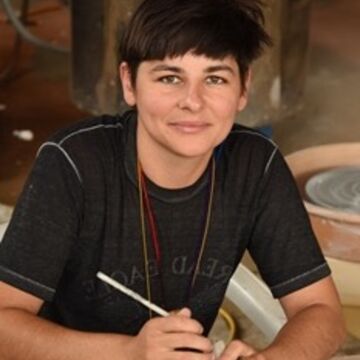

Liz McCarthy
Assistant Professor, Adjunct
Contact
Bio
Liz's art explores her body in relation to material culture. They consider their body is an ever-changing material intertwined with human and nonhuman environments. She draws on queer/feminist ideas about the body and clay’s deep and diverse humanist tradition. Often her sculptures take the form of whistles that have the potential for instrumental performances. These objects harken potential modes for human collectivity, vulnerability, and play.
She received her MFA from the University of Illinois at Chicago in Studio Art and her BFA from the University of North Carolina at Asheville in Photography. Her mix of performance, sculpture, and installation have been exhibited at Museum of Contemporary Art Chicago, Hyde Park Art Center, and Goldfinch in Chicago; Ghebaly Gallery in Los Angeles; ExGirlfriend in Berlin, and numerous other galleries and institutions. She has participated in residencies at Atlantic Center for the Arts, ACRE, High Concept Laboratories, Banff Centre, Ox-Bow, and Lighthouse Works. Her projects have been supported by Joan Mitchell Foundation, Illinois Arts Council, Chicago’s Department of Tourism, and Chicago Artist Run Spaces Award. Most recently she had solo exhibition "Montrare" at Belong Gallery in Chicago. Currently she acts as Founding Director of the GnarWare Workshop ceramics school and community studio. She was previously a founding Co-Director of the artist collective and exhibition space Roxaboxen Exhibitions.